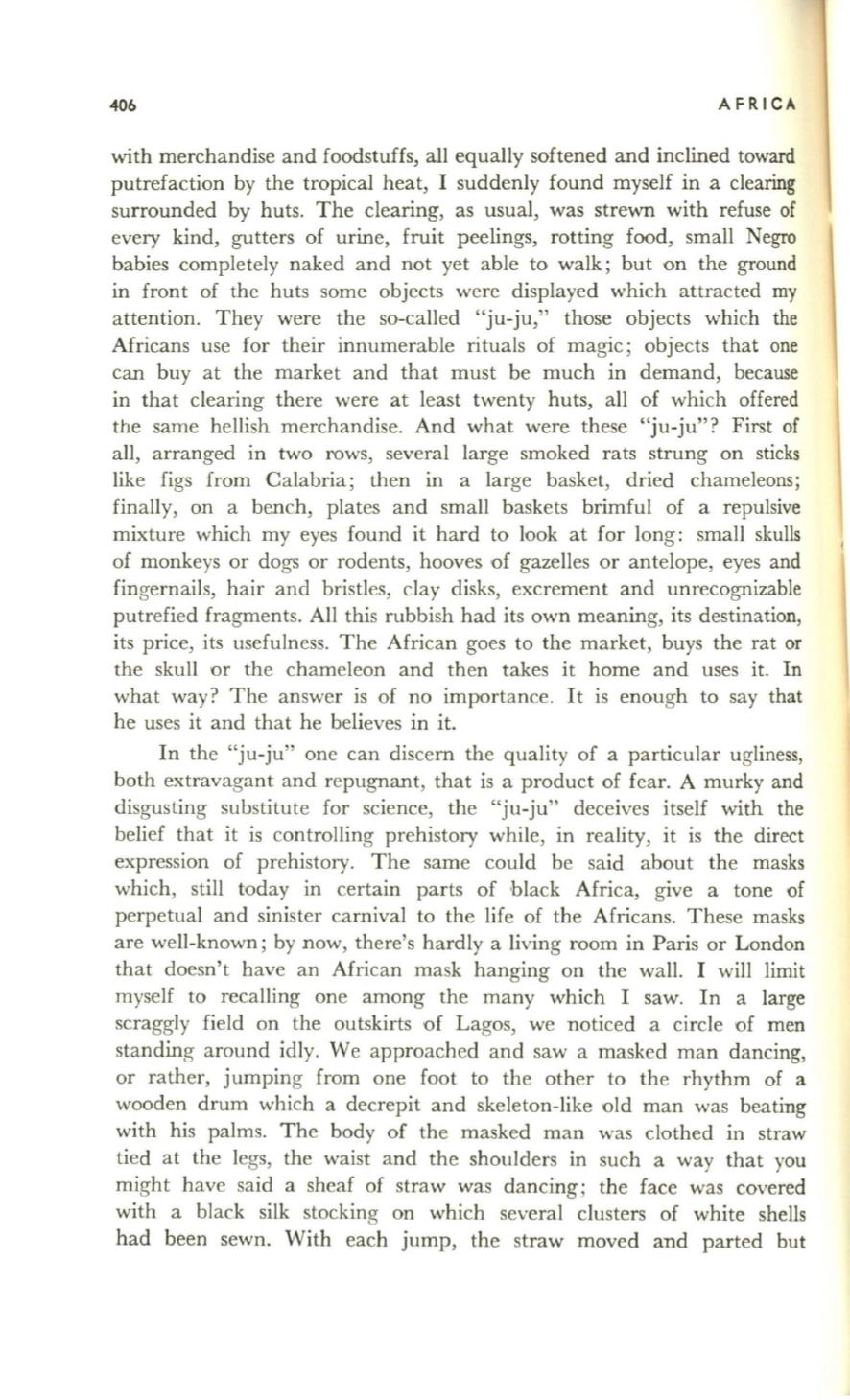
40b
A FR I
CA
with merchandise and foodstuffs, all equally softened and inclined toward
putrefaction by the tropical heat, I suddenly found myself in a clearing
surrounded by huts. The clearing, as usual, was strewn with refuse of
every kind, gutters of urine, fruit peelings, rotting food, small Negro
babies completely naked and not yet able to walk; but on the ground
in front of the huts some objects were displayed which attracted
my
attention. They were the so-called "ju-ju," those objects which the
Africans use for their innumerable rituals of magic; objects that one
can buy at the market and that must be much in demand, because
in that clearing there were at least twenty huts, all of which offered
the same hellish merchandise. And what were these "ju-ju"? First of
all, arranged in two rows, several large smoked rats strung on sticks
like figs from Calabria; then in a large basket, dried chameleons;
finally, on a bench, plates and small baskets brimful of a repulsive
mixture which my eyes found it hard to look at for long: small skulls
of monkeys or dogs or rodents, hooves of gazelles or antelope, eyes and
fingernails, hair and bristles, clay disks, excrement and unrecognizable
putrefied fragments. All this rubbish had its own meaning, its destination,
its price, its usefulness. The African goes to the market, buys the rat or
the skull or the chameleon and then takes it home and uses it.
In
what way? The answer is of no importance.
It
is enough to say that
he uses it and that he believes in it.
In
the "ju-ju" one can discern the quality of a particular ugliness,
both extravagant and repugnant, that is a product of fear. A murky and
disgusting substitute for science, the "ju-ju" deceives itself with the
belief that it is controlling prehistory while, in reality, it is the direct
expression of prehistory. The same could be said about the masks
which, still today in certain parts of black Africa, give a tone of
perpetual and sinister carnival to the life of the Africans. These masks
are well-known; by now, there's hardly a living room in Paris or London
that doesn't have an African mask hanging on the wall. I will limit
myself to recalling one among the many which I saw.
In
a large
scraggly field on the outskirts of Lagos, we noticed a circle of men
standing around idly. We approached and saw a masked man dancing,
or rather, jumping from one foot to the other to the rhythm of a
wooden drum which a decrepit and skeleton-like old man was beating
with his palms. The body of the masked man was clothed in straw
tied at the legs, the waist and the shoulders in such a way that you
might have said a sheaf of straw was dancing; the face was covered
with a black silk stocking on which several clusters of white shells
had been sewn. With each jump, the straw moved and parted but


